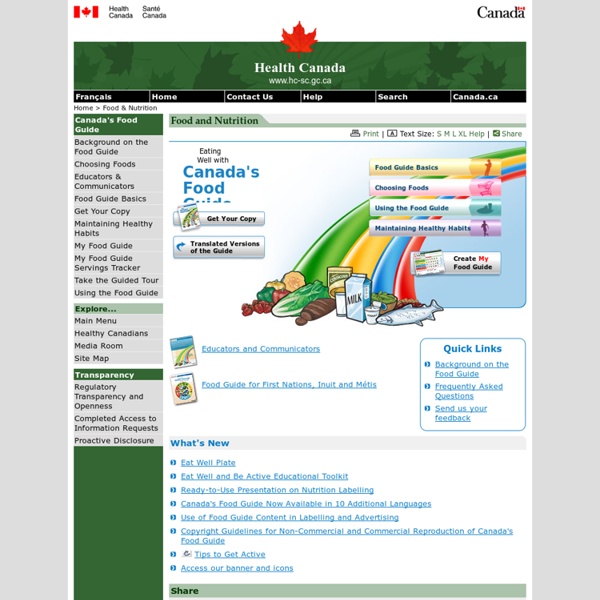



卫生部新闻发布会介绍《中国居民膳食指南(2007)》 主持人 邓海华: 各位媒体的朋友大家上午好。今天卫生部在这里召开专题新闻发布会,邀请有关领导和营养学方面的专家介绍最新修订的《中国居民膳食指南(2007)》有关的情况并回答大家关心的问题。 下面首先有请孔灵芝副局长介绍有关情况。 孔灵芝: 为给居民提供最根本、最准确的健康膳食信息,指导居民合理营养、促进健康,卫生部今日发布《中国居民膳食指南(2007)》以下简称《指南》。 《指南》由一般人群膳食指南、特定人群膳食指南和平衡膳食宝塔三部分组成。 为了帮助一般人群在日常生活中实践《中国居民膳食指南(2007)》,在膳食宝塔的使用说明中增加了食物同类互换的品种以及各类食物量化的图片。 一、将饮水、零食及饮料这些与健康密切相关的膳食内容引入到《中国居民膳食指南》中,使内涵更加丰富全面。 二、建议成年人每天进行累计相当于步行6000步以上的身体活动。 三、提出更具体的量化指标。 四、在坚持合理营养、平衡膳食的理念下注重慢性病的预防。 五、表现形式不拘一格,科学诠释居民对膳食认识的误区和难题。 六、各特定人群膳食指南内容更加丰富和具体。 随着我国社会经济的快速发展,我国城市化速度将逐步加快,与膳食营养营养相关的慢性疾病对我国居民健康的威胁将更加突出。 谢谢大家! 邓海华: 下面请中国营养学会理事长、中国CDC的葛可佑研究员介绍有关情况。 葛可佑: 各位领导、各位专家、各位媒体朋友,各位参会的同仁们大家早上好。 中国营养学会受卫生部的委托修订《中国居民膳食指南(2007)》,感到任务艰巨而且十分光荣。 2007年1月正式召开专家委员会,确定修改膳食指南的指导思想、编写方法以及新的《指南》结构框架和时间进度等安排。 这本《指南》和过去我们使用的1997年的版本有什么不同? 参考资料部分包括两类内容。 在新版《指南》中,关于特定人群的指南和膳食宝塔的内容和一般人群是同样的精神进行处理,因此具有同样的特点,比1997年版的《指南》内容更丰富了。 《指南》如果不为群众所掌握,不变成群众的行动,它还仅仅是一本书。 第二个比较明显的偏差,是把动物试验直接移到人体,很多试验是通过动物做出来的,但是动物试验的结果并不一定适合人体。 我这里提出一个要求,各位在宣传营养知识的时候,不妨参考《指南》,假如说和《指南》有矛盾,建议研究研究,不要冒然的直接宣传。 谢谢大家! 下面的时间请媒体提问。 东方卫视记者: 有两个问题。 杨晓光: 香港财经杂志记者: 杨晓光:
Empfehlungen ‹ Gesund Essen [was-wir-essen.de] {*style:<b>Die flexible aid-Pyramide bietet eine gute Möglichkeit zu prüfen, ob eine Mahlzeit sowie die gesamte Tageskost ausgewogen und gesund sind. Unterschiedliche Ebenen mit Lebensmittelgruppen, Ampelfarben von rot bis grün sowie Portionsangaben zeigen, welche Lebensmittel täglich und in welcher Menge in den Magen wandern sollten. </b>*} Die Pyramide fasst dies mithilfe der Ampelfarben zusammen: Grün heißt freie Fahrt - für Getränke und pflanzliche Lebensmittel, Gelb bedeutet Achtung - nur mäßig tierische Produkte, Rot signalisiert bremsen - bei Fetten, Süßem, fetten Snacks und Alkohol. Die Hand als Portion Die aid-Ernährungspyramide enthält alle Lebensmittel in den richtigen Portionen, die für eine gesunde Entwicklung wichtig sind. So viele Mahlzeiten sind ideal Bei der Portionsgröße kommt es natürlich auch die Häufigkeit der Mahlzeiten an: Wer häufiger isst, braucht weniger pro Mahlzeit; wer seltener isst, braucht natürlich mehr auf einmal.
Piramide Alimentare Italiana Fomento de Nutrición y Salud El Plato del Bien Comer es una representación gráfica de los grupos de alimentos que funciona como guía alimentaria. Esto quiere decir que su objetivo es proporcionar las recomendaciones para lograr una alimentación correcta entre la población general. Debido a que las estadísticas de salud en nuestro país muestran una tendencia cada vez mayor al desarrollo de problemas tanto de desnutrición como de sobrepeso y obesidad en todas las etapas de la vida de muchas personas, diferentes instituciones privadas y públicas dedicadas a la promoción de la salud, se reunieron en un comité para discutir y proponer consensos en materia de orientación alimentaria a nivel nacional. Como resultado de los trabajos de este comité, se emitió un proyecto de Norma Oficial Mexicana (Proyecto de Norma Oficial Mexicana PROY NOM-SSA2-043-1999) , en el que se describen los aspectos que deben considerarse siempre que se brinde información de alimentación y nutrición a la población mexicana.
EFSA Topic: Dietary reference values and dietary guidelines A balanced diet is one that provides adequate amounts of energy and nutrients for health and well-being. Dietary Reference Values (DRVs) are the complete set of nutrient recommendations and reference values, such as population reference intakes, the average requirement, adequate intake level and the lower threshold intake. DRVs can be used for instance as a basis for reference values in food labelling and for establishing food-based dietary guidelines (FBDG). FBDG translate nutritional recommendations into messages about foods and diet, and can guide consumers on what to eat and help them make healthy dietary choices. EU framework The scientific advice on nutrient intakes is the basis for Community action in the field of nutrition. Scientific advice in this field is also available from other sources. EFSA' s role and activities EFSA provides the most up-to-date and comprehensive scientific advice to support EU policy makers in their decision making process in the field of nutrition.